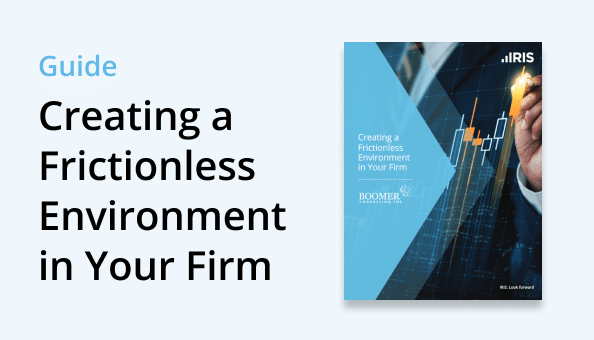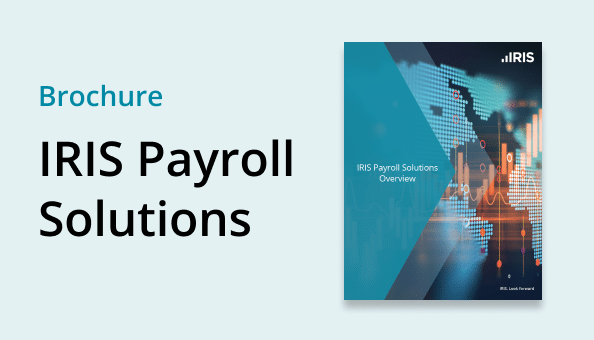Payroll Management Services Designed for Efficiency
-
Reduce and simplify your involvement in payroll administration and execution
-
Improve efficiency by outsourcing an administrative process that generates no revenue or profit
-
Get expert guidance on any topic related to payroll administration
-
Pay your employees accurately and on time, every time
Reliability and Compliance in Payroll
IRIS Global’s payroll technology and services will transform the way your business does payroll. Our easy-to-use software and expert Payroll Guides are there every step of the way to help you when you need it.
Payroll Processing
Stop worrying about getting your payroll done right. Enjoy less work and stress. Your employees will appreciate the accuracy and timeliness of your payroll.
- Eliminate time-consuming importing and exporting of files
- Process your payroll in real-time from anywhere or pre-schedule it to run any time
- Easy to use any time, from any device


Payroll Tax Management
Get all your payroll tax payments and filings accurate and on time.
- Payroll tax calculation
- Filing your taxes with the appropriate agencies
- Pay and file local taxes by jurisdiction
- Have your taxes deducted automatically
- Save time and avoid penalties for late or inaccurate payments
Many growing companies qualify for tax credits they don’t claim. IRIS is ready to change that. Billions of dollars in tax credits go unclaimed each year. We are ready to do the work for you to identify and claim tax credits.
Payroll
IRIS Global’s Payroll Management Services
-
Workers’ Compensation
Workers’ Compensation
Link your payroll seamlessly to our workers’ compensation services for accurate premium calculations based on actual payroll data. With our pay-as-you-go model, manage premiums efficiently, enhancing cash flow and simplifying your operations.
-
Reporting and Analytics
Reporting and Analytics
Elevate your decision-making with our comprehensive reporting and analytics platform. Delve into a wealth of payroll data to track performance, analyze trends, and gain actionable insights—all in real-time.
-
General Ledger Integration
General Ledger Integration
Our payroll system effortlessly synchronizes with your accounting software, facilitating automated journal entries and eliminating manual data input errors. Enjoy a harmonious financial ecosystem with our streamlined general ledger integration.
-
Wage Garnishment
Wage Garnishment
Tackle the intricacies of wage garnishment with our expert administration services. We ensure precise deductions and legal compliance, simplifying the process for your team while upholding your obligations.
-
Earned Wage Access
Earned Wage Access
Provide your workforce the benefit of accessing their earned wages whenever they need it. Our solution promotes financial well-being and employee satisfaction, offering a valuable tool to enhance retention and loyalty.
-
Remote Payroll
Remote Payroll
Our remote payroll services are designed to simplify the complexities of managing a distributed workforce. Whether it’s adhering to local tax laws or handling state-specific compliance, our knowledgeable guides support you every step of the way.

What our customers say
Ranson Family Dental
“Our account representative is super friendly, knowledgeable, and willing to help with everything we need. IRIS and our representative have made my job easier as I don’t have to take time out of my busy day to do payroll.”
Frequently Asked Questions (FAQs)
-
A pay stub, also known as a check stub, itemizes what an employee has earned and what amounts have been deducted, providing a clear record of their net pay. It typically includes wages for the pay period, year-to-date earnings, tax withholdings, and other deductions.
-
Unemployment tax funds unemployment benefits and is required both federally, under the Federal Unemployment Tax Act (FUTA), and at the state level, with State Unemployment Tax Acts (SUTA). While all employers are subject to FUTA, there are exemptions under specific conditions.
-
Employers must withhold federal income taxes, Social Security and Medicare taxes (FICA), additional Medicare taxes if applicable, federal unemployment tax (FUTA), and, in most states, state income taxes from employees’ paychecks.
-
Federal law mandates that employers keep payroll records for a minimum of three years. Records related to payroll taxes must be kept for at least four years, and some jurisdictions may require retention for up to six years.
Explore our HCM Solutions
Related resources

Blog Article
Taxable Fringe Benefits & Including Them on W-2s

Blog Article
Minimum Wage for Tipped Employees by State

Blog Article







